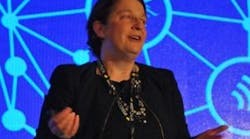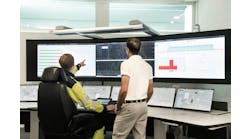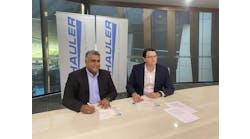“You need to think about what you will need for the next 20 years.” Dow Chemical Global Process Automation Technology Leader Helen Dotson describes the strategy behind the system migration at a tsunami-crippled facility.
In addition to massive devastation, loss of life and the crippling of infrastructure, the tsunami that hit the east coast of Japan in 2011 devastated The Dow Chemical Company facility in the coastal city of Soma, including the Yokogawa CENTUM XL system that had been running the plant.
So while the world mourned the tragedy and the entire region rebuilt, the Dow team patched. They repaired the facility with spare parts while planning for a comprehensive reimagining of operations down the line. And by 2013, Helen Dotson, Dow’s global process automation technology leader, who was fresh off a similar system migration project closer to her Midland, Michigan home base, was leading that massive effort.
“We had been using an end-of-life CENTUM XL system from Yokogawa, along with a Mitsubishi hot-running backup system,” she explained during her keynote at the Yokogawa Users Conference this week in Orlando. They needed something new. And while everyone was cognizant of the perils of running their facility with a dated system on spare parts and borrowed time, Dotson insisted on patience in developing their rebuild strategy. “You don’t just jump into replacing a system,” she advised. “You need to think about what you will need for the next 20 years.”
Look before leaping
So they didn’t jump. They pondered. Then walked. Dotson’s team compiled user requirements for their system—determining what they needed to accomplish before deciding on which vendor was going to help them do it.
By mid-2014 Dow had decided to continue working with Yokogawa and the partners launched the Soma migration project, upgrading to the CENTUM VP system with newfound abilities to automatically move 85% of Dow’s current code, shed obsolete code, upgrade the safety instrumented system and enhance instrument-failure detection.
Dotson praised her Yokogawa partners, not only for providing the best tools to meet Dow’s needs but also for understanding the cultural challenges that exist in global projects and respecting the methodology of the chemical giant. “Technology selection is critical, but there is a human side to migration projects,” the speaker opined, noting the softer contributors to success like patience, flexibility regarding changes, and something as simple as the cheerful translation of messages.
Ultimately, the project was a success in any language. Dotson’s team had created and followed its strategy to maximize value throughout the migration—determining optimum business objectives, properly negotiating funding within her enterprise, projecting adequate lead times and methodical implementations, while timing efforts to coincide with planned plant shutdowns and mapping out detailed support structures to maintain once things went live.
Slow. Steady. Strategic.
“You have to always remember that your project, your results are going to have a huge impact on that plant,” Dotson stressed. “Every hour. Every day. Until that system is replaced. The operators, the plant managers, the plant engineers are all going to have to live with this system. You have to do it right the first time.”
They did.
Dotson used an analogy of the human body to define a migration such as this—swapping out the brains and guts and heart of a plant and replacing them with new and improved organs. Using that conceit, this project on the coast of Japan was a flawless surgery.
On time. Under budget. No unplanned events. The CENTUM VP system, integrated with Yokogawa’s ProSafe-RS SIS System, has been delivering on promises.
In fact, this Soma project has become a model for Dotson in spearheading subsequent Dow migrations, born out of a disaster and an aging system, propelled by heart and guts and plenty of brains on both sides of the world.




